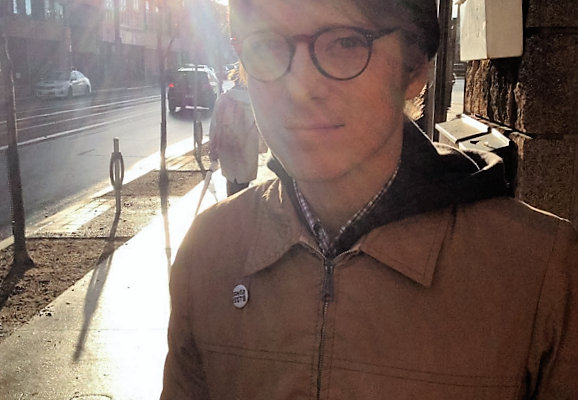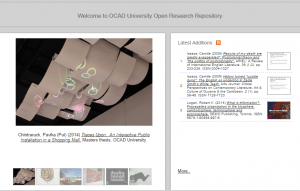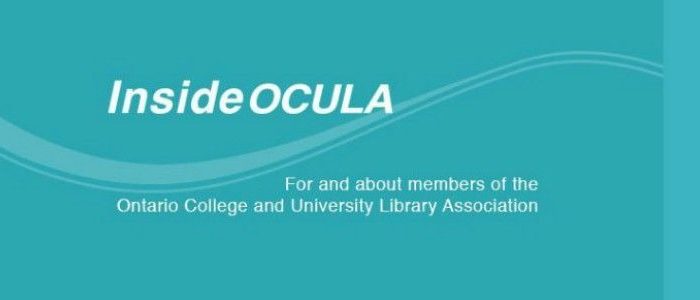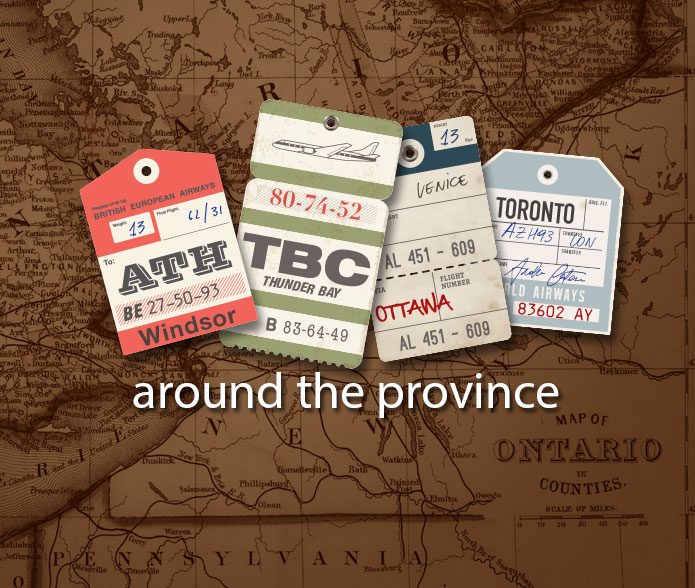
Strategies for Modelling Scholarly Communications
Reflections of an OCULA New Librarian Resident
1. Engage faculty
My role of Scholarly Communications Librarian is the first of its kind at OCAD University, made possible by seed funding provided by the OCULA’s New Librarian Resident initiative. From the outset, I needed to reach out to the community at OCADU, get to know it, and better understand my task ahead – to develop a scholarly communications program. Open Access Week, with its guest speakers and faculty panel discussions, was a great way to get the conversation started about what the library intended to do with through a scholarly communications program. In the spirit of keeping the dialogue alive, I did not let the conversation end there, but rather used that as a means to meet with those faculty members one on one in the months ahead. Open Research (openresearch.ocad.ca), our open access institutional repository, contained scant material from faculty and research teams. Because of these new relationships forged after Open Access Week, I was able to begin the work of building the archive by acquiring research papers and other outputs. It was a start.

2. Get it in writing
Building support for scholarly communications one faculty member at a time can feel overwhelming. To stimulate broader support, our advisory group decided to draft a Statement of Support for Open Access which we hoped to be endorsed formally by the University Senate. The path to approval entails three steps: (1) endorsement by the Research Committee, (2) a vote by Academic Planning and, (3) A vote by Senate. Encouraged by recent examples at the University of Windsor (http://www.uwindsor.ca/dailynews/2015-05-15/university-windsor-senate-passes-open-access-policy) and Florida State University (http://news.fsu.edu/More-FSU-News/FSU-Faculty-Senate-passes-university-wide-open-access-policy), we felt that the tide was in our favour. This effort also helps foster communication with faculty, as we consulted with researchers on the wording, aim, and scope of the statement.
In addition to writing scholarly communications into policy, it is also important to integrate it with our academic plan. It so happened that OCAD University was engaged in institution-wide academic planning toward a renewed Strategic Mandate Agreement with the province. Needless to say we felt the objectives of a scholarly communications program should be written into this plan. It is our hope that previous interest, support, and willingness to collaborate from faculty can form the basis for new services, such as digital journal publishing, for example.
3. Listen, really listen, to faculty concerns
If there’s one theme to this list, it’s that modeling scholarly communications is an endlessly consultative process. That includes receiving feedback that you do not necessarily want to hear. Some faculty may not be comfortable with having post-print manuscripts in an institutional repository. Professors from studio-based disciplines might have questions about how green open access might affect them. For example, what is the process for uploading collections containing hundreds of photographs? Note these concerns and build solutions where possible into your policy and processes.
Another part of listening is trying to assess which services are really in demand. Rather than circulate a survey, we opted to target areas such as creative writing or publications, gather them together in a room, and proceed to determine just scholarly communications services can best serve them. These ongoing sessions inform the types of services that offered in the future and the extent to which they will be embraced.
4. Plan for the future
Scholarly communications must consider:
- the past – capturing old outputs and archiving and disseminating them digitally;
- the present – putting processes in place to respond to present-day research creation and supporting it;
- and the future – new frontiers in scholarly communications such as research data management (RDM) and expanded open access mandates. Putting structures in place in advance can ensure not getting left behind in the future.
5. Support it
While putting new scholarly communications services in place, it is also our team’s priority to ensure they are properly supported. That means not only building scholarly communications into the academic plan, as mentioned before, but also building training and workflows into the structure. That is why, during this latter half of my residency, I am actively creating learning objects including detailed guides for depositing work in the repository and short training videos.
On a final note, I wish to express my gratitude for this opportunity that OCULA has made possible and am happy to see the Association continuing develop emerging librarians through the New Librarian Resident program and student competitions such as Lightning Strikes.
Chris Landry is the Scholarly Communications Librarian/Digital Projects Curator at OCAD University and recipient of OCULA’s 2015 New Librarian Residency Award. He can be reached at clandry [at] ocadu.ca

